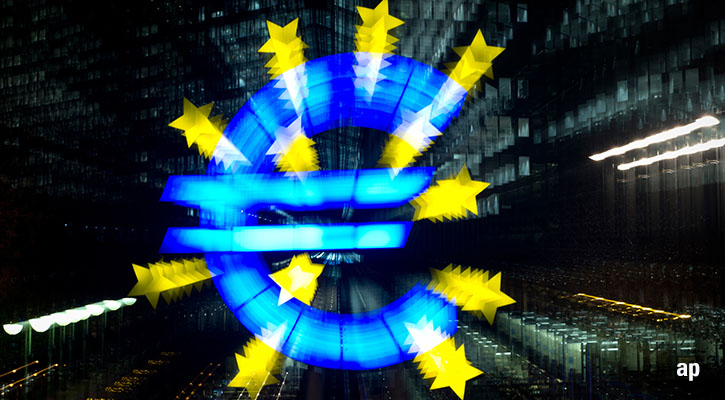
January’s eurozone data showed a fall in inflation to 2.8%, from 2.9% the month before, backing the case for an ECB rate cut. But core inflation was higher than expected at 3.3%. Here’s what to expect from the release of February’s data.
Flash inflation figures for the eurozone are due at 11am, Friday, March 1 and markets are expecting further falls in the Harmonized Index of Consumer Prices (HICP). Inflation is forecast to have rusen by 2.5% on the year before, down from 2.8% in January, according to FactSet consensus estimates.
What does that mean for the prospect of an interest rate cut by the ECB in the spring? Ahead of the March 7 monetary policy meeting, members of European Central Bank recently noted that the downside surprises to inflation in recent months would likely imply a downward revision for 2024 in the March projections.
Euro area annual inflation fell to 2.8% in January, down from 2.9% in December, according to Eurostat. A year ago, the rate was 10%.
In January, the highest contribution to the annual euro area inflation rate came from services (+1.73 percentage points, pp), followed by food, alcohol & tobacco (+1.13 pp), non-energy industrial goods (+0.53 pp) and energy (-0.62 pp).
ECB Expected to Lower Inflation Outlook
“We look for the updated [ECB] staff projections in March to downgrade core inflation by -0.1pp to 2.2% in 2025, although we see risks skewed towards a larger downgrade of -0.2pp to 2.1%,” said Goldman Sachs in a note.
Recent ECB commentary stressed a dependence on the data, because seasonality would complicate the interpretation of incoming inflation numbers. Members said that “continuity, caution and patience” were still needed, since the disinflationary process remained fragile and letting up too early could undo some of the progress made in the fight against inflation.
Goldman Sachs expects that the downgrade of the inflation projections to be paired with a tweak of the formal policy language in March, noting that significant progress has been made towards the inflation goal. “We expect President Lagarde to note in the press conference that the projections look encouraging, that the Council remains data dependent but that it needs more confidence that inflation will return to 2% in a timely and sustainable manner.”
Is April too Early for the First Rate Cut?
But wage data are particularly sticky. The ECB indicator of negotiated wage rates slowed to 4.5% in the fourth quarter of 2023, but it still shows persistent above target wage growth.
“At 4.5%, negotiated wage growth is still significantly above the 3-3.5% range needed to reach the ECB's 2% inflation target,” said Tomasz Wieladek, chief European economist at T. Rowe Price, who argues that the ECB Governing Council will certainly wait until at least June to initiate a round of interest rate cuts. By then negotiated wage data for the first quarter of 2024 will be available.
“However, there is a significant risk of a further increase in negotiated wage growth in the first quarter of 2024. Under this scenario, even a June cut could become difficult to achieve,” ended Wieladek.
Goldman Sachs maintained its forecast for the first cut in April on expectations of continued disinflation. But the economists added: “The timing of the first cut remains data dependent, and we see a low hurdle for the Governing Council to wait until June if the core inflation and/or wage data slow less than we anticipate.”





























